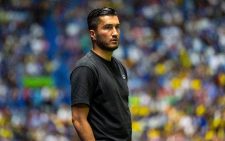Jobs: Least diverse counties named

Bomet, Elgeyo Marakwet, Vihiga, Nyandarua and Nyamira are Kenya’s least diverse county governments on the distribution of job opportunities.
They are closely followed by Kisii, Mandera, Kericho, Wajir, Makueni and Nyeri, in that order, according to the Senate’s Committee on National Cohesion, Integration and Equal Opportunities.
The committee has cited 34 counties for failing to comply with the provisions of the law on employment by public service boards.
Lawmakers now want action taken against the devolved regions for contravening Section 65 (1) (e) of the County Governments Act by employing more than 70 percent of the workforce from the dominant community.
Public service boards
The law states that in selecting candidates for appointment, public service boards should ensure that at least 30 percent of vacant entry-level positions are filled by candidates who are not from the dominant ethnic community in the county.
The National Cohesion and Integration Commission (NCIC) has established that 34 counties have employed more than 70 percent of their workforce from the dominant community.
Appearing before the committee, which is chaired by Mohamed Chute (Marsabit), the commission disclosed that 97.3 percent workers in the Bomet County government are from the dominant Kalenjin community, followed Elgeyo Marakwet (96.4 percent) and Vihiga (95.8 percent).
“The biggest problem in this country starts from the top. You need to sit down with the national Executive and lay bare the ills affecting this country. This country needs a reset button so that it starts afresh,” said Chute.
The NCIC 2023 audit report on Ethnic and Diversity of the County Public Service shows that Nyandarua has not complied with the law, employing the majority Kikuyu at 95.6 per cent, Nyamira (94.7 percent), Kisii (94.3 percent) and Mandera (93.4 percent).
NCIC chairman Samuel Kobia told the committee that Kericho has also failed to comply with the law and has employed the Kalenjin community at 93.3 per cent, Wajir (Somali, 93.1 percent), Makueni (92.5 percent), Nyeri (92.8 percent) and Muranga (92.2 percent).
18 counties regressed
Some 18 devolved units have significantly regressed in their compliance with the provisions of the County Government Act, Kobia said, with over 90 per cent ethnic composition of the dominant community in the county.
The counties include Bomet (97.3), Elgeyo Marakwet (96.4), Vihiga (95.9), Nandi (95.8), Nyandarua (95.6), Nyamira (94.7), Kisii (94.3), Kericho (93.3) and Wajir (93.1 percent).
“Out of the 45 ethnic communities in Kenya, 10 dominate the County Public Service,” said Kobia.
According Kobia, the Kalenjin have taken 15.45 percent of the County Public Service jobs, followed by Kikuyu (15.40), Luhya (13), Luo (9.15), Kamba (8.7), Kisii (7.5), Mijikenda (5.0), Meru (4.7), Somali (4.3) and Maasai (4 percent).
Similarly, of the 47 counties, Nairobi has the biggest workforce with 13,513 employees, followed by Kakamega (7,087), Bungoma (6,477), Kisii (6,477), Machakos (5,777), Mombasa (5,739), Nakuru (5,521), Narok (5,451) and Homa Bay (4,711).
Minority communities
Kobia also told the committee that since 2016, county governments have employed at least 98,299 public servants, with the highest number of new public service staff coming from Kenya’s dominant ethnic groups.
They include the Kikuyu, who have 15,646 employees (15.9 percent), Kalenjin 13,877 (14.12 percent), Luhya 13,526 (13.7 percent), Kamba 8,300 (8.4 percent) and Luo 8,204 (8.35 percent).
Others are Kisii with 6,288 employees (6.40 percent), Meru 4,798 (4.88 percent), Mijikenda 4,786 (4.87 percent), Maasai 4,756 (4.84 percent) and Somali 4,204 (4.28 percent).
Minority communities occupy a paltry 12.9 percent of the employment positions under public service boards, adding that 29 minority communities hold less than one percent of such jobs.
The NCIC says that in public service board job placements, there are only 15,646 Somali employees (4.31 percent), Maasai 13,877 (4.0 percent), Turkana 13,526 (1.9 percent), Taita 8,300 (1.5 percent) and Borana 8,204 (1.03 percent).











